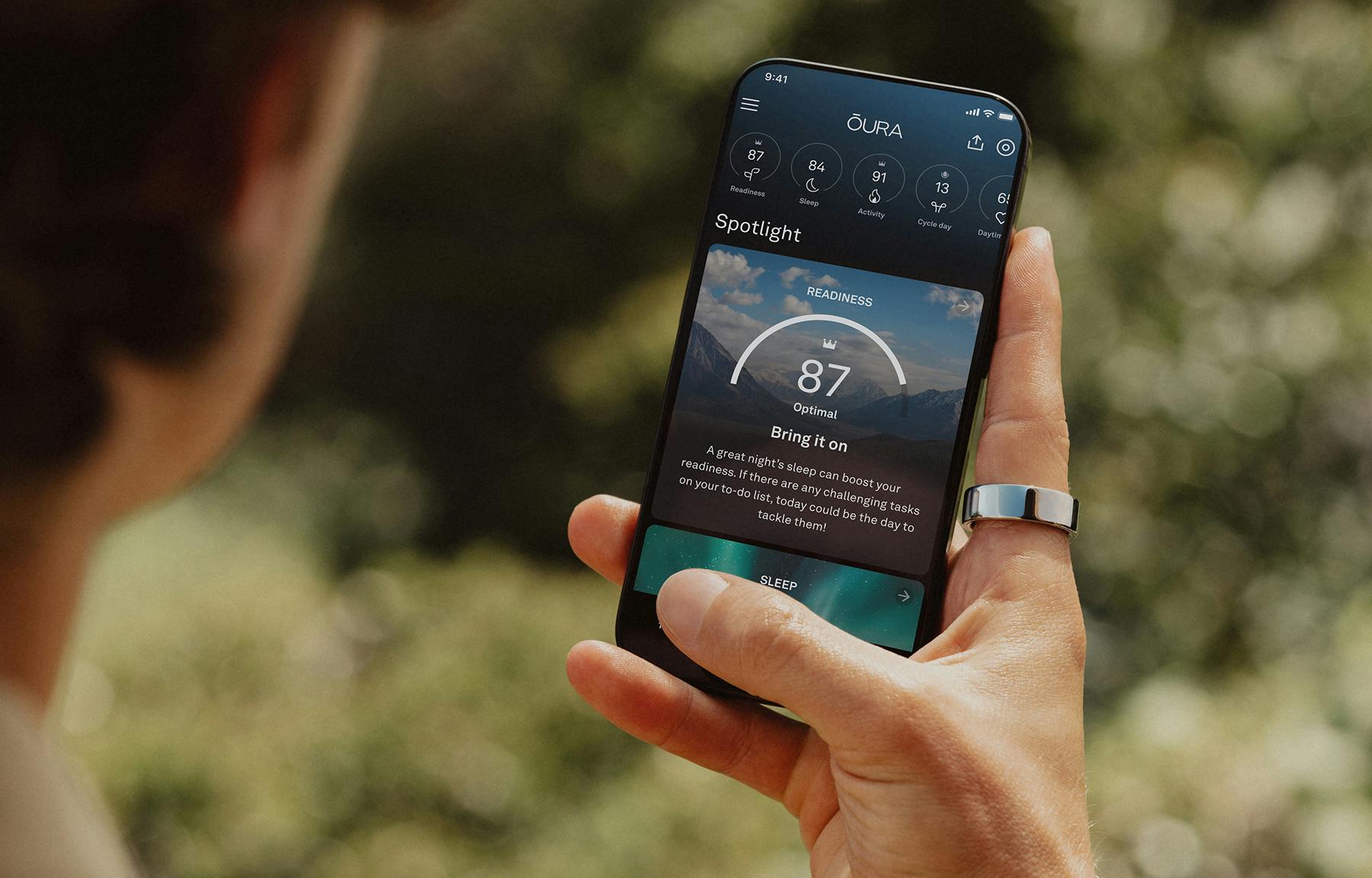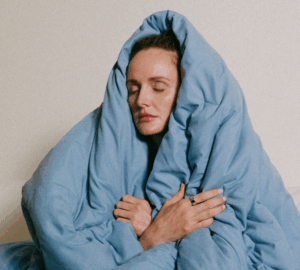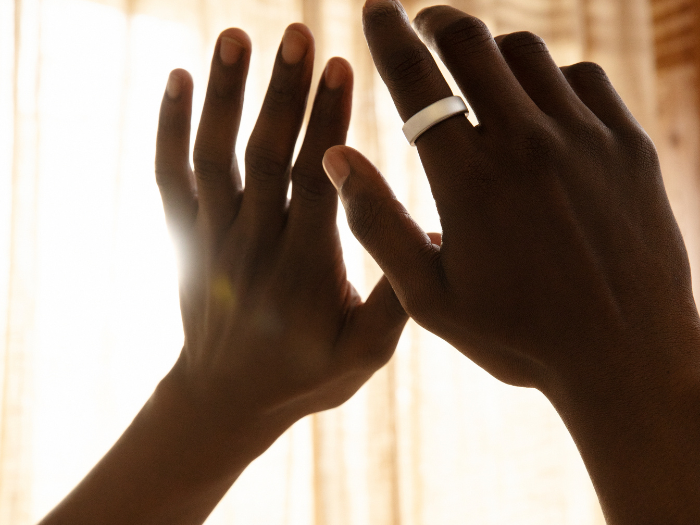If the switch to or from Daylight Saving Time (DST) makes you feel out sync, you’re not alone. This biannual event can have a disruptive impact on your sleep schedule and daily routine.
«Virtually every cell in our body operates in a clock-like fashion, with certain organs and physiological processes being performed or halted at various times in a typical 24-hour day,» explains Rebecca Robbins, PhD, sleep researcher and Oura advisor. «These systems cannot change course on the flip of a coin, which is what happens when we change the clocks on our walls.»
The good news is that with some small adjustments, you can have a smoother transition to a new season.
Fall Back, Sleep Less? What Oura Data Shows
Using de-identified data from 644,066 Oura Members in the United States, our data science team analyzed changes from the week before to the week immediately following the November 2024 time change. The results showed slight but significant changes in members’ sleep, recovery, and activity metrics compared to the week prior.
Key Findings:
- Less Total Sleep: Oura Members slept for slightly less time overall with 0.39% decrease in total sleep.
- Lower Sleep Quality: Sleep was slightly less efficient, with the average sleep efficiency dropping by 0.35%. Notably, there was an increase in time awake by nearly 2% (about 1.4 minutes), suggesting more fragmented sleep and difficulty staying asleep.
- Recovery Takes a Hit: The body’s immediate stress response to the time change is visible in the recovery metrics. The average resting heart rate (a sign of stress/fatigue when higher) increased by 0.35%, and the average HRV (a key marker of nervous system readiness when higher) decreased by 0.74%. These small shifts collectively suggest a less optimized state of recovery in the week following the DST transition.
- More Sedentary Time: In the week following the fall time change, we saw an increase of 2.08% in sedentary time, equating to about 10 minutes of sitting per day. In correlation with the increased sedentary time, average step count dropped by 2.10%.
- Shorter Workouts: For the days users tracked a workout, the average length of that workout was slightly shorter, with the average workout time decreasing by 1%.
The Physiological Impact of Daylight Saving Time
While gaining or losing only an hour may seem a small change, this shift can disrupt your circadian rhythm as well as your body’s inherent sleep drive.
Your Circadian Rhythm
The concept of Daylight Saving Time directly clashes with your circadian rhythm, your body’s inherent 24-hour internal clock. This master clock, governed primarily by the pattern of light and darkness, dictates fundamental physiological processes—including when you feel energized, hungry, alert, and sleepy.
For most mammals, including humans, the circadian rhythm is hardwired to optimize for being awake during the day and asleep at night. Your best sleep and recovery days often occur when your lifestyle perfectly aligns with this natural, light-driven rhythm.
A sudden time change can create a state of internal misalignment, which is why even just 60 minutes can lead to measurable declines in:
- Sleep duration and efficiency: Your body hasn’t finished its full sleep cycle when the alarm goes off on the new, earlier time.
- HRV and RHR: Your central nervous system registers the schedule shift as stress, impacting key recovery metrics.
Your body even has a unique preference, or chronotype, for how your internal clock naturally aligns. Whether you are an “early bird” (naturally more active in the morning) or a “night owl” (more alert in the evenings), the DST change pushes every chronotype further out of sync with their optimal timing, contributing to the data drops we observed.
LEARN MORE: What Is Your Chronotype & Why Does It Matter?
Your Sleep Drive
The moment you wake up, the “drive” to sleep increases and builds throughout the day. The greater your sleep drive, the more your body signals that it’s time to sleep.
DST can have a notable impact on sleep drive. In the spring, when you lose an hour of sleep, your circadian disruption can result in sleep deprivation. The reduced sleep duration and the misalignment between your internal clock and the external time can lead to an increased sleep drive, meaning a stronger urge to sleep.
In the fall, when you gain an extra hour of sleep, it can temporarily reduce your sleep drive. While it may feel like a bonus, this extra hour can also lead to disruptions in sleep patterns. You may struggle to feel tired when our usual bedtime rolls around, because the clock is showing an hour later than your internal clock.
Other Impacts
Studies have suggested that more serious consequences may also result: The March time change has been associated a range of negative consequences, from car accidents to heart attacks.
The autumn time change has been associated with an uptick in car collisions with deer, as well as an increase in heart attacks, the week after DST ends, compared to other weeks.
5 Tips to Adjust to Daylight Saving Time Changes
1. Get plenty of natural light.
As mentioned earlier, the initial negative effects of DST have to do with your body’s innate 24-hour cycle based on the sun’s pattern. By getting more natural light early and often (be sure to protect your skin), you assist your circadian rhythm.
Some ideas from Dr. Robbins: «If you love to run, try to do it outside next week. If you have a commute, try to walk to an extra stop on the subway, or take your lunch or coffee break outside. Exposure to natural light in your environment at the new clock time will help your internal clock adjust to the new pattern of light and darkness in our environment.»
READ MORE: Why Do I Wake Up Tired? How to Feel More Alert in the Morning
2. Adjust your sleep schedule.
In the week prior to the start of Daylight Saving, use small changes in your sleep schedule to mitigate the hour change:
When you «spring forward” (when DST begins): Shift your bedtime and wake time earlier. The clock will be moved forward by one hour at 2am, so you should adjust your bedtime and wake time to be an hour earlier than your current schedule. You can do this by shifting your bedtime by 15 minutes per day over four days to gradually adapt to the new time schedule.
When you «fall back” (when DST ends): Shift your bedtime and wake time later. In this case, you gain an hour, so you can adjust your schedule by gradually moving your bedtime and wake time an hour later in 15-minute increments.
3. Establish a sleep-promoting evening routine.
Throughout your evening, there are a number of steps you can take to promote restful sleep. These can include:
- Ceasing alcohol intake 3-4 hours before bed
- Cutting caffeine 6 hours before bed
- Avoiding heavy meals inside 4 hours before bed
- Slowly reducing exposure to light as the evening progresses
- Eliminating blue light in the last 60 minutes (electronic screens, LED bulbs)
- Clearing your mind with a relaxing activity or following one of the guided meditations or breathing exercises in the Oura App’s (Explore content.
LEARN MORE: 10 Simple Breathing Exercises for Sleep and Relaxation
4. Focus on daily habits that improve sleep quality.
Getting quality sleep takes a series of sleep-promoting behaviors. Your daily behaviors can help or hurt your sleep quality. Regular physical activity, a healthy nutritional balance, optimal meal timing, evening blue light exposure, and a sleep-promoting bedroom environment are just a few of the things you can modify to promote more restful sleep.
5. Utilize power naps.
Taking a short nap, up to 25 minutes, can help relieve daytime sleepiness in the period after the time change. The best time for a nap is early in the afternoon, a time when your body naturally has a decline in energy. This timing also prevents a negative effect on your sleep that night.
READ MORE: How Long Should You Nap?
Use Oura to Help You Adjust to a New Season
Oura gives you insights into how you slept, and how your body is responding. Every morning, you get a Sleep and Readiness Score, that can help you decide how to adjust your day in response. For example, after the clocks change, you may notice you’re getting less deep sleep, which may explain why you’re feeling tired, despite still getting the same amount of sleep. This can be caused by going to bed later than your chronotype, which can happen easily if the clocks move an hour later.
The lesson is to be proactive: If your Oura data shows you’re struggling after a time change, focus on strict sleep hygiene, prioritize your wind-down routine, and be mindful to build movement breaks into your schedule to counteract the tendency toward increased sedentary time.
RELATED: Oura Ring Data Reveals How Summer Affects Our Sleep










